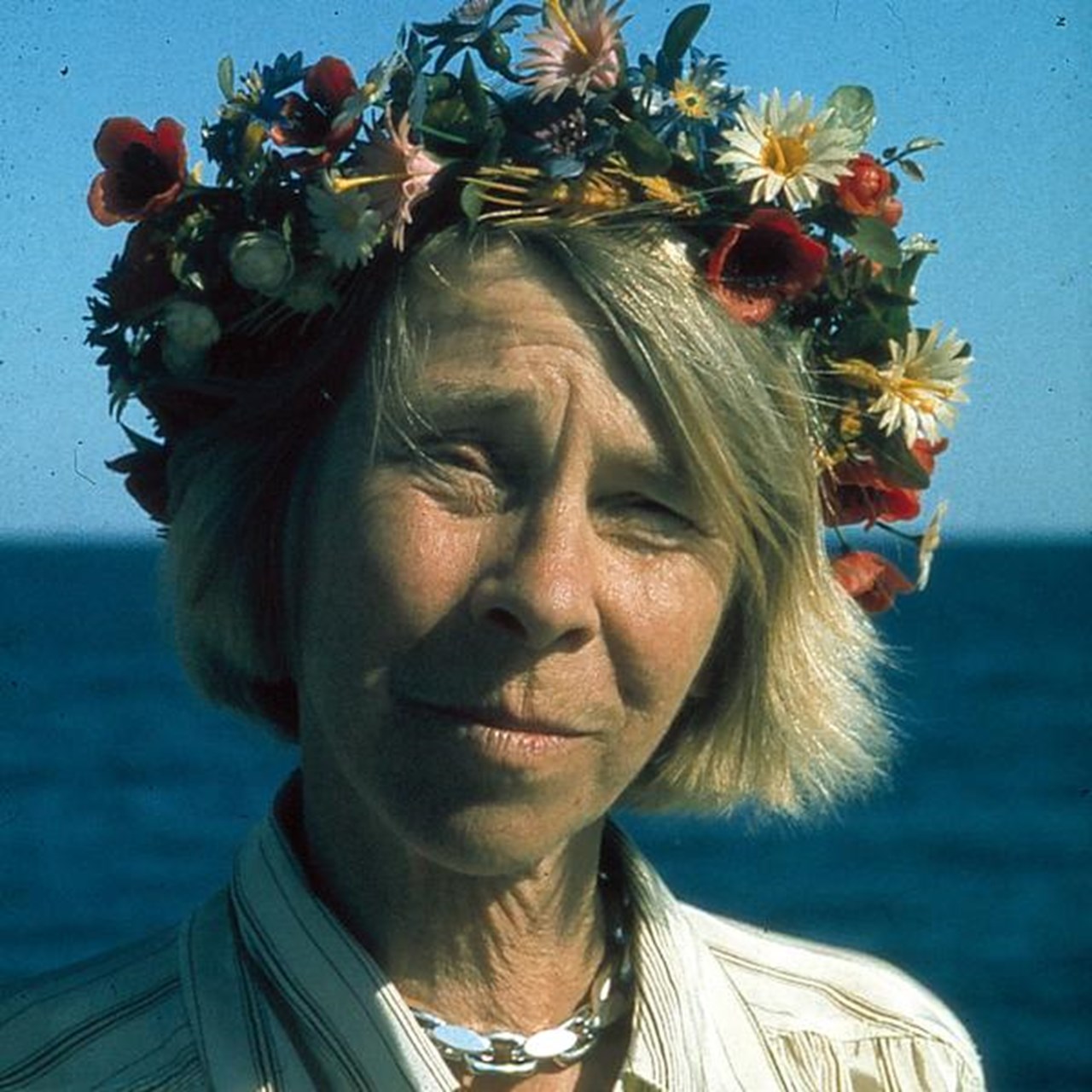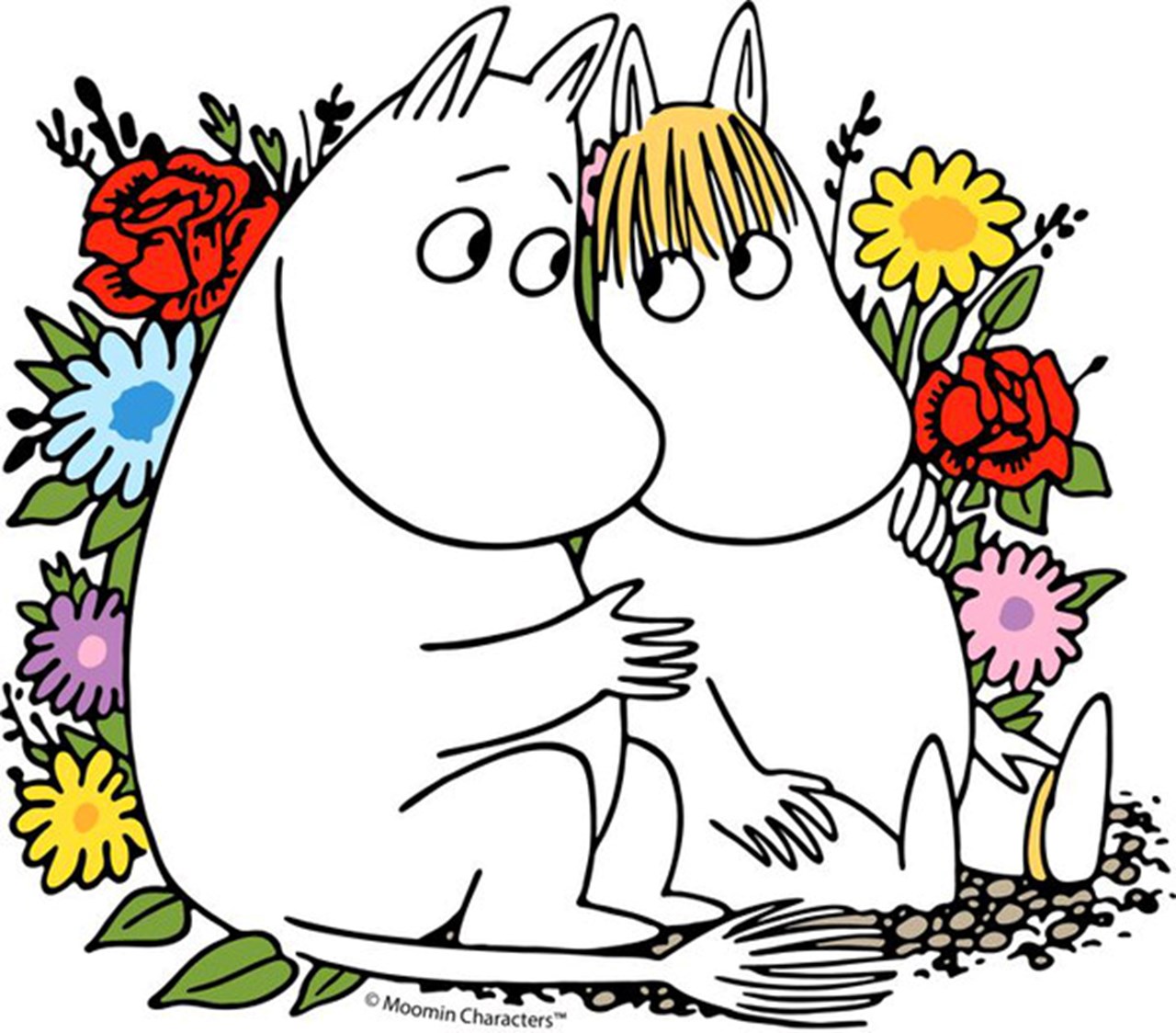
FEATURE Tove Jansson’s Moomin stories turn 80 years old and continue to charm new generations of readers. They are grand adventures in a visually stunning and rather cute universe. But there is also an existential depth that is not spoon-fed to the reader but rather leaves an opening onto the big questions of life. “The stories oscillate between the dangerous and the safe,” says Maria Jönsson, professor of literature as well as a Tove Jansson and Moomin expert.
The very first Moomin story was published in 1945. In The Moomins and the Great Flood, Moominpappa has been missing for a long time, a flood has drenched the surroundings and all the creatures are left without protection. Moominmamma and Moomintroll get help, in turn they help others and in a beautiful valley they find the Moominhouse. Eventually the family is reunited and this becomes the starting point for a number of stories about the Moomin family and their friends.
The fact that the fairytale starts in an almost dystopian setting is not unusual for Tove Jansson’s Moomin stories. Floods, deluges and invading space aliens or a threatening comet that is set to crash into Earth are other main themes around which classic adventure stories play out: Something has to be overcome, fought or brought back home.

Tove Jansson invents the Moomin universe during World War II.
ImagePer Olov Jansson, ® Moomin Characters™“Tove Jansson invents the Moomin universe during World War II and it could be read as a sort of refuge and a place in which to process what is happening and the threats to humanity. In Moominvalley threats often take the form of natural disasters,” says Maria Jönsson, who is professor of literature and a teacher on the Programme for Literary Studies and Creative Writing, as well as a Tove Jansson expert. She also teaches the popular course The World of Ideas in the Moomin-books (7,5 credits, held in Swedish) at Umeå University – more on that later.
Even though the dangers can be perceived, at least on paper, to be somewhat frightening, the Moomin family is seldom afraid. With an open mind and sense of calm, things always turn out alright. Maria Jönsson argues that is one of the cornerstones of the Moomin philosophy: Letting things be the way they are and not trying to influence them so much. In particular when it comes to the characters who live in Moominvalley.
“Allowing people to be themselves, accepting differences and letting in the foreign with which you co-exist. Letting each other be. The characters are never trying to erase that which is irritating and worrying about another person or trying to change each other and instead appreciate what there is. It is quite nice to transported into their perspective on each other and on the world,” says Maria Jönsson.
The central point in the stories is the Moominhouse. The door to the blue cylindrical home is always open to the inhabitants of the valley, visitors or those looking for shelter. Everyone is welcome – even Stinky, the somewhat mean, thievish character who causes problems.
“The safe home and the hospitality given by the Moomin family is a consistent theme. It is also not very important that a family is built through blood ties or the classic nuclear family. The idea of the family is instead quite open to interpretation. For example, the Moominhouse is home to Little My, and characters such as Sniff and Snufkin are always there.”

Maria Jönsson, professor of literature, read the Moomin stories as a child and continues to carry them with her through her life. “As an adult I have taken an interest in Tove Jansson's authorship as a whole, which is more than just Moomin,” she says.
ImageSimon Öhman JonssonAnother strength of the stories is the multifaceted collection of characters. The valley is home to a motley crew of people encompassing a variety of different creatures and personalities. Although they have clear traits it is never spelled out with adjectives what a person is like – it does not say that Moominmamma is thoughtful, that Moomintroll is fair or that Snufkin is a dreamer. These are things the reader has to interpret for themselves.
“Tove Jansson was very non-judgemental in her description of the characters,” concludes Maria Jönsson.
As time passed the Moomin stories developed more and more layers of meaning, with a complexity that increasingly appealed to an adult audience. In the second-to-last Moomin book, Moominpappa at Sea, the characters, in particular Moominpappa, find themselves in some sort of existential crisis. Moomintroll starts to grow up and finds new qualities in himself and the mother and father reflect on who they really are and what they want from their lives now that Moomintroll is entering the next phase of life as a young adult.
“In Moominpappa at Sea there are no more adventures, nothing more to save and nothing that needs to be resolved. That makes Moominpappa feel lost and he wants to go travelling. He more or less forces his family to go to a desert island in the sea where he hopes to find a new task and direction for his life. Once there, he and the others in the family are confronted with their weaknesses and self-deception but finally also allow themselves to be changed by the experience.”

Moomintroll and Snorkmaiden.
Image® Moomin Characters™In the final Moomin book, Moominvalley in November, the Moomin family has completely exited the story. But the Moominhouse still stands and various creatures who are all going through their own journeys move in. This is also Maria Jönsson’s favourite book in the Moomin universe.
“That is perhaps a bit strange as the Moomin family are not even there, but their absence is felt so strongly. It’s exciting how she manages to write a story about them even though they are not in it. Instead they emerge through other characters and their dreams, longings and problems, where everyone is going through their own development or cleansing process and coming out the other side a little bit clearer. It is a really beautiful book.”
The fact that the door is wide open to the difficult things, the worries and that which can feel tough, is something that many people associate specifically with the Moomin stories. Most people can relate to the fear and cold that spreads when the monster the Groke closes in and the ground freezes to ice around her, but her character can also be interpreted as a descriptor of more abstract things. Such as when anxiety or worry engulfs you.
“It’s always implied just enough and as a reader you can go as far as you are able. She doesn’t write that things are to be felt in a particular way or anything like that,” says Maria Jönsson.
What is it that makes these stories so enduring, even 80 years later?
“Some of them are very complex, mysterious and existential, and that is what makes them so exciting. Paired with the fact that they depict this simple adventure in the cute, safe world. The stories oscillate between the dangerous and the safe,” says Maria Jönsson who continues:
“I also think that people return to them because of their view of their fellow human beings and the world, which is something you need. A gaze that is astonished, respectful and curious, where differences and divergence is met with curiosity. I think it can be refreshing to be able to experience that view of the world. The Moomin universe is full of wisdom and insights into what life is like and can be, something that has provided many people with support and strength. That is probably why people get tattoos with quotes from the books, for example.”
Moominvalley in November was the last Moomin book to be published in 1970. Tove Jansson continued writing books for adults such as the novels The Summer Book and Fair Play, as well as several short stories where she was allowed to demonstrate her proficiency at short story writing. However, the Moomin stories live on in numerous new editions, TV and film adaptations and a whole industry of interior decor items, with Arabia’s Moomin mugs having become a commercial success.
I also think that people return to them because of their view of their fellow human beings and the world. A gaze that is astonished, respectful and curious, where differences and divergence is met with curiosity.
Two years ago, the fascination with the Moomin universe gave rise to a brand new course at Umeå University. The World of Ideas in the Moomin-books (7.5 credits) continues to attract applicants.
“When I had the opportunity to create a new course within literature for children and adolescents, which is my field of research, it felt good to dive into this subject with the students. To explore these ideas, because there is something about these novels that always invites discussions about ideas.”
In the course the students read three stories – from the beginning, the middle and the end of the Moomin suite – and get to apply different conceptual perspectives to them.
“They get to learn about existentialism, developmental psychology and gender and queer perspective. Once they are familiar with them, the students get to choose which of these three perspectives they want to use when reading the novels. These novels really invite conversations about the big questions,” says Maria Jönsson.